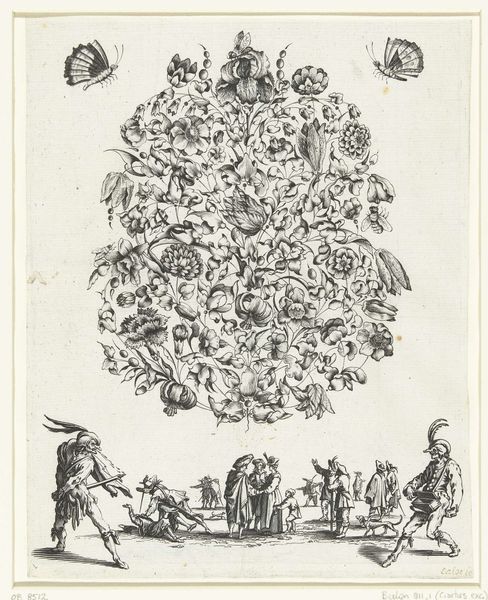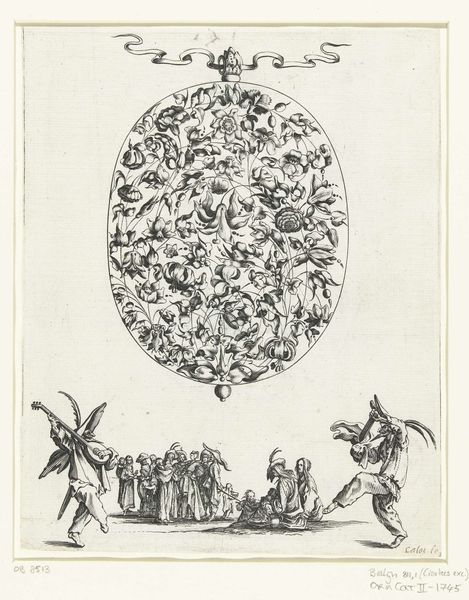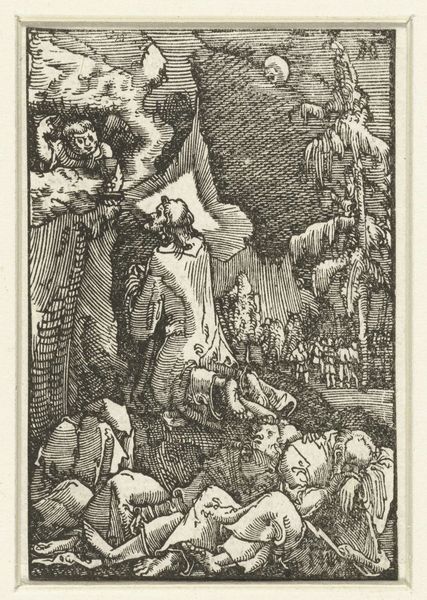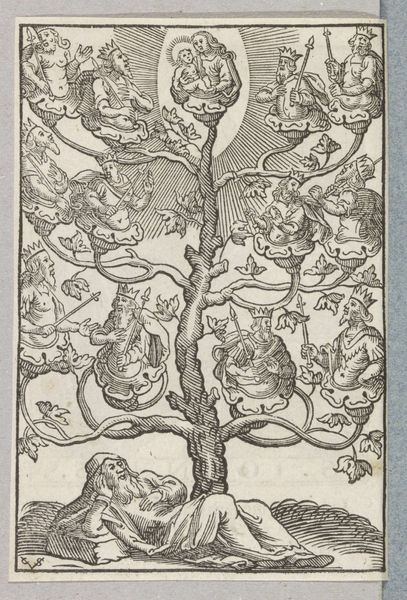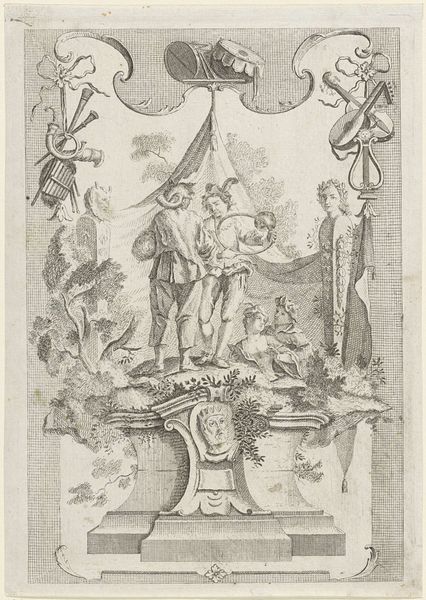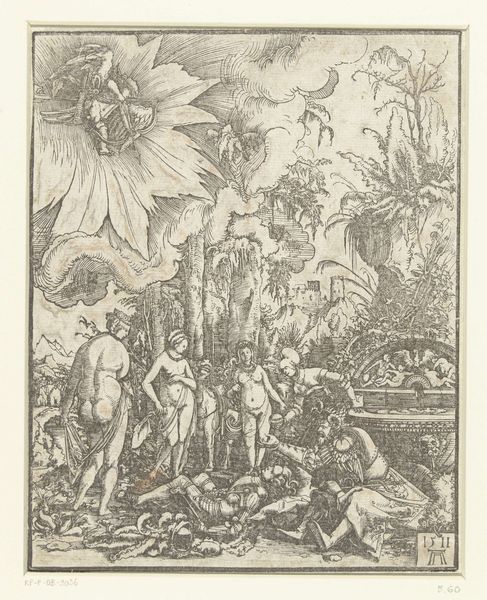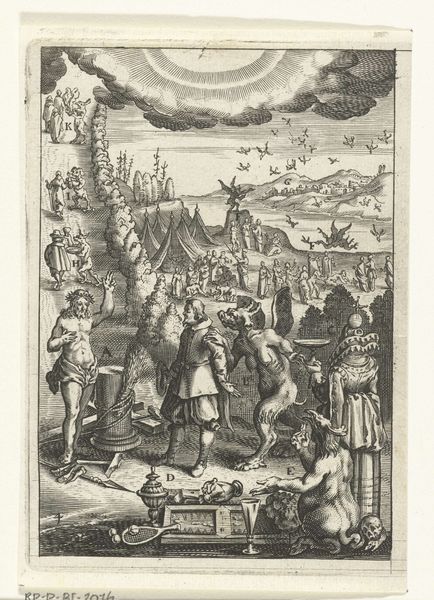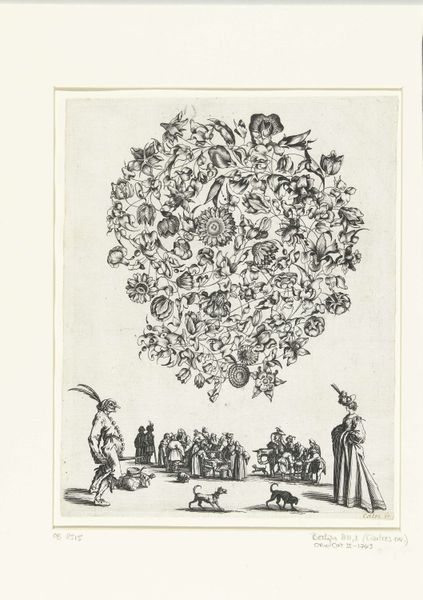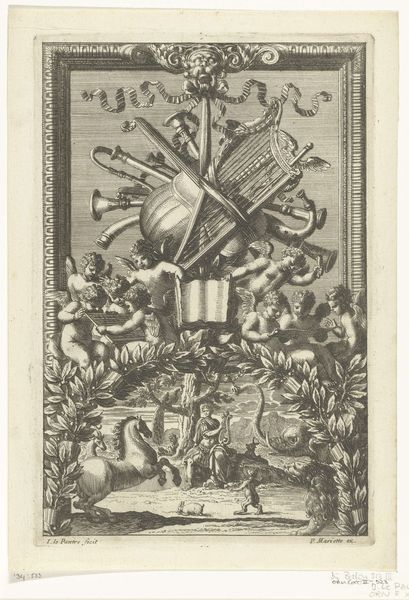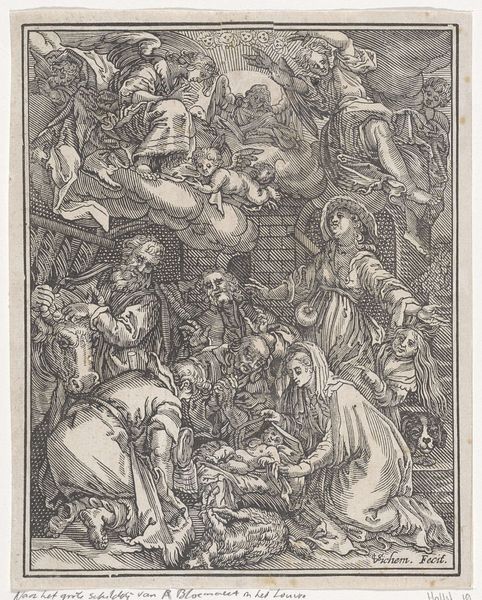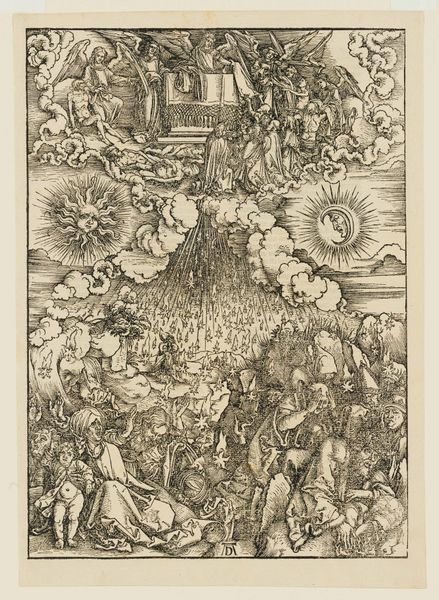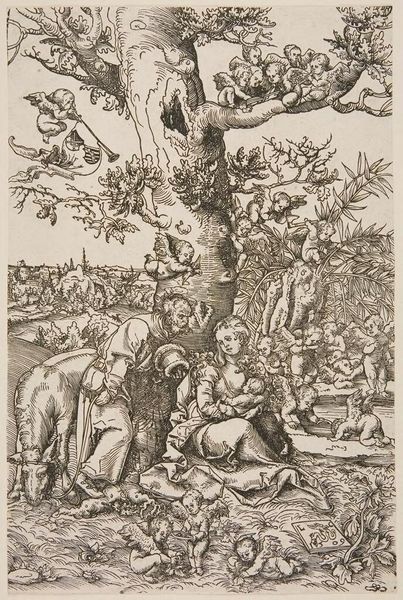
print, etching, engraving
#
baroque
# print
#
etching
#
figuration
#
line
#
genre-painting
#
engraving
Dimensions: height 203 mm, width 161 mm
Copyright: Rijks Museum: Open Domain
Curator: We're looking at "Edelsmidsboeket met ranken" created around 1635 by Balthazar Moncornet, housed here at the Rijksmuseum. It’s an engraving and etching, showcasing meticulous line work. Editor: My initial impression is one of whimsy. The floral arrangement almost levitates above the figures, creating a delightful sense of fantasy, yet, strangely, the flowers look almost like they are a heavy chandelier. Curator: The piece is fascinating from a material perspective. Consider the labour involved in such fine engraving, the cultural value placed on botanical knowledge during this period, and the market for such prints – it's a tangible artifact of 17th-century craft production and consumption. The line quality speaks volumes to skill. Editor: Absolutely. But beyond craft, look at how Moncornet weaves familiar visual symbols to create something meaningful. Flowers in art often speak to the brevity of life, the cycle of birth and death, renewal. Then there are these little figures at the bottom. What do they represent? Are they characters of the commedia dell'arte? Symbols of human folly? Curator: Or perhaps they're related to leisure activities enjoyed by a specific social group. See the detail of the garments, suggesting wealth and status, not typically common to street performers. We might even consider how this image functions as a commodity – an emblem of social aspiration made affordable through printmaking. Editor: Yes, the interplay of the precious bouquet versus those common little actors – the juxtaposition sparks such a dialogue. I can not take my eyes off these contrasting scenes. I feel drawn into an analysis that includes concepts of ephemerality, spectacle and the material world all reflected with symbols that would be well understood back then. Curator: Precisely. The etching and engraving process, allowing for distribution and reproduction, transforms the very meaning and social circulation of the artwork. Editor: It seems more complex, though, than just surface decoration or reproduction of an ideal; instead, I can imagine it becoming a starting point for personal meditations about life itself. The way these two elements interact gives such depth! Curator: It is truly remarkable how seemingly disparate elements coalesce within the materiality of this print. I feel as though the tension makes me question social mobility during the 17th century. Editor: This exploration between the symbolic weight of the flower against the antics down below makes me more curious than before. I feel more enriched about that historical view thanks to it.
Comments
No comments
Be the first to comment and join the conversation on the ultimate creative platform.
